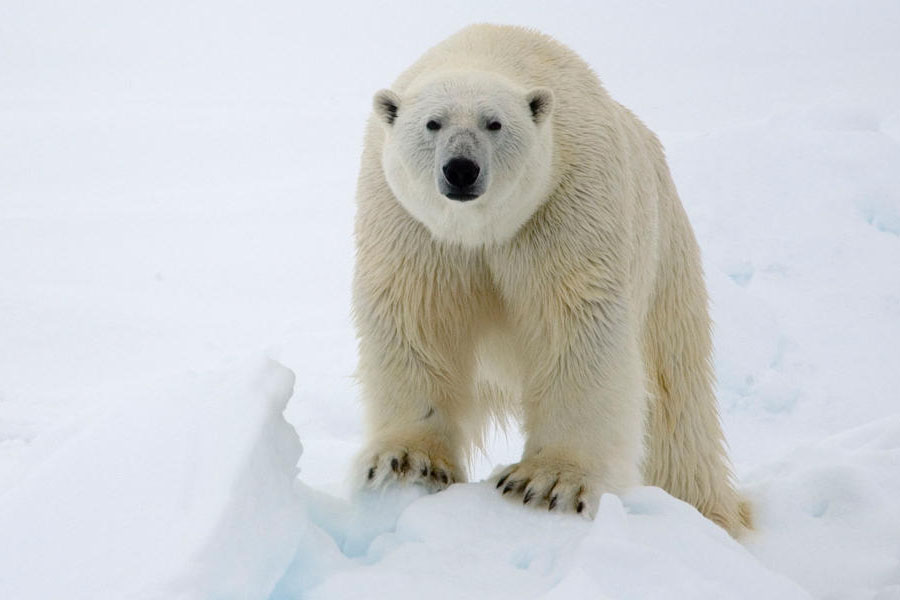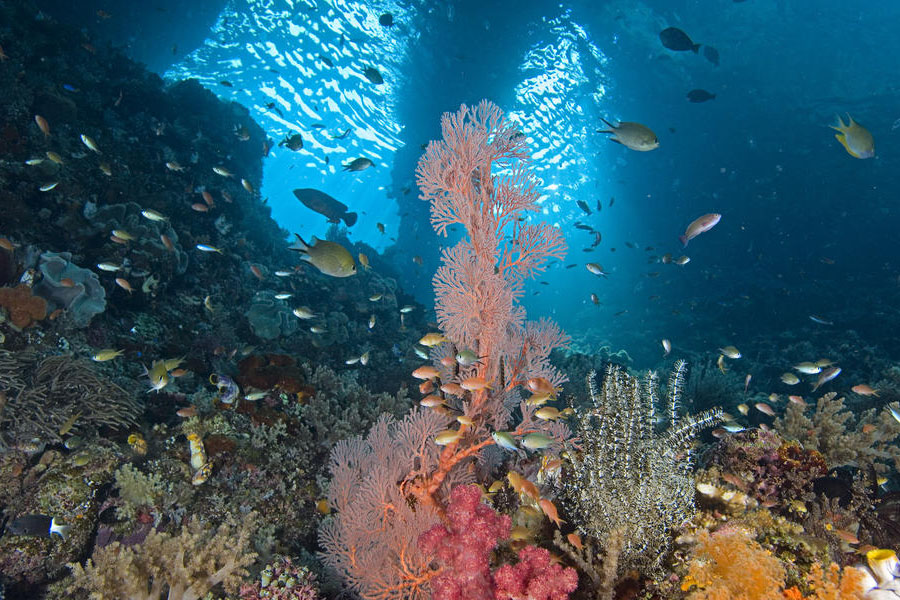
Climate change places important medical advances in jeopardy
Diabetes, osteoporosis, kidney disease and cancer top the list of medical problems which are both difficult and expensive to treat. Moreover, these diseases all too often prove fatal. Very few of us have been spared from being affected, either directly or indirectly, by one or more of these serious illnesses.
How is the topic of orchid conservation, which is the purpose of this column, related to medical research and treatment of diseases? The answer is actually very simple. Orchids, like all living things, need a complex ecosystem in which to survive. Climate change, which is unfortunately advancing at a very rapid pace, is having deleterious effects all over the world. Ecosystems from the frozen arctic and Antarctic, all the way to the equatorial rain forests are undergoing major changes, causing many species to lose their habitat and food supply, and thereby threatening these species with extinction. This is a great loss in many ways, particularly when we consider that some creatures’ anatomy carries the answers to some of our most urgent medical challenges, if only we had the opportunity to study them adequately.
Although climate change rarely gets the news coverage it deserves, one topic that has been getting a considerable amount of attention is our health care system, and the question of how we can continue to fund a system which takes up 17% of our GDP and is growing yearly. This trend is concerning all of us. We all know someone with diabetes since it effects a large percent of our population. One-half billion people worldwide are obese and in this country, 250,000 Americans die each year from the effects of obesity, with medical costs amounting to $90 billion.
Here is one example of how an important medical advance can be stopped dead in its tracks by the effect of climate change. It turns out that three of our country’s most significant medical issues may have answers in the anatomy of polar bears. If there is enough time to study polar bears, we could possibly develop cures or treatments for diabetes, osteoporosis and kidney failure. However polar bears are under significant threat, due to loss of polar ice, which inhibits the bears’ ability to hunt seals.

Polar Bear Image from World Wildlife Fund website. Polar bears appear to have an immunity to diabetes, osteoporosis and kidney disease
First, let’s consider how polar bears could help us solve the problem of diabetes. Polar bears hibernate for 5 to 7 months every year. They prepare for this long fast by putting on massive weight, eating mostly seals, their main diet. But despite their obesity prior to hibernation, polar bears do not get diabetes. As yet, the reason is unknown. All we know is that obesity in humans very often leads to diabetes, and in polar bears it does not. Science is working to understand why polar bears seem to be immune, and when that discovery is made we will have the answer to a major medical problem in our country.
Second, osteoporosis is a medical condition which is frequently the cause of falls, particularly in elderly people. Recovery can be difficult and painful, and at times a fall can turn into a fatality. We have no cure for osteoporosis, and the drugs we do have manage to only slow down the progress of the disease. The drugs also have side effects, and are not well tolerated by some people. Polar bears are the only mammal species that does not get osteoporosis, despite long periods of immobility during hibernation. Polar bears’ blood contains a substance which prevents osteoporosis. We need to learn what this substance is, find a way to replicate it, with the goal of treating humans. The importance of this medical advance cannot be over-emphasized. If we humans were immobile for 5 months through hospitalization or paralysis, we would lose 1/3 of our bone mass.
Each year 70,000 Americans die from causes related to osteoporosis, at a cost of $18 billion. One third of women over 65 experience bone fractures unrelated to accidents.
A third medical answer we could gain from studying polar bears is prevention of kidney disease. Many cases of kidney disease are related to urinary tract infections, which in turn are usually caused by difficulties urinating and consequential retention of urine. When humans are unable to expel toxins via urinations for three days, it results in death. Amazingly, polar bears never urinate during their very long hibernation period. Yet, their bodies are able to process the toxic urine into new amino acids and proteins. As a result, they do not get urinary infections. It would be a great boon to our human population if we could learn how this works in polar bears. Currently 8% or our population is affected with chronic renal failure.
Medical researchers studying polar bears face a growing problem, however. Global warming is breaking up the ice sheets, causing a serious threat to the polar bears. They feed on seals which come up to breathe through thin ice spots on the once massive ice sheets. With these ice sheets now shrinking, there is much more safe, open water for the seals, where the bears can’t reach them, and the bears are literally starving to death.
Why don’t scientists just study the polar bears in zoos? The problem is that the bears do not hibernate in captivity, so their bodies have no need to produce the substances which protect them from diabetes, osteoporosis and urinary tract infections. We need to study polar bears in their natural habitat, and we need them around for decades to complete the research.

Coral reefs are tragic victims of global warming. Currently there is an epidemic of coral bleaching taking place, caused by the death of organisms living in the coral killed by the rise in temperature of the sea water. Coral bleaching changes a colorful underwater world, teeming with a huge variety of plants and animals, into a pale skeleton, devoid of all life.
There are even unique chemicals generated by many species that have proven useful to medicine and our lives. One such example is found in certain inhabitants of coral reefs, which are found in tropical and sub-tropical waters in many parts of the world.
Coral bleaching affects more than just the scuba industry. Aside from being the source of life for so much of the marine ecosystem, some very interesting and valuable creatures thrive only on the reefs. The cone snail genus consists of over 700 different species, each of which produces from 100 to 200 different poisons. These poisons are used to stun their prey. Altogether the members of this genus could have up to 140, 000 different poisons in its arsenal.
Just to emphasize how important this little creature is, the only long term (chronic) pain killer on the market, called Prialt is made from the venom of one of these cone snails. The only alternative to Prialt is the group of drugs called opiates, which are commonly used for pain relief today, but have the long-term aspect of becoming less effective and having serious side effects, such as cessation of breathing, among other problems. Prialt is the only chronic pain relief treatment we currently have.
Cone snails are thought to be the most valuable source of future medicines of any species. To date only 6 of the 700 snail species have been studied. Unless we manage to stop the global warming process and thereby save the coral reefs, we will forever lose the opportunity to study cone snails, because these creatures totally depend on the coral reefs for their existence.
While it is tempting to not think about global warming, we cannot avoid considering the cost of our exorbitant lifestyles, which are being supported by an energy usage per capita of twice that of any other advanced country. Each little thing we do to reduce this consumption will have an additive effect. Every time we make a change which requires less fossil fuel, we are helping the environment. Every decision, from combining errands to reduce driving, to using less fertilizer on our lawn, makes a difference.
With each of our efforts, however small, perhaps we will increase the chances to benefit from the vast wealth of information and cures awaiting future discoveries, if only these resources continue to exist. Change is not easy for humans. It requires a firm commitment and a little extra work. Most of the time we only make changes when we have no other choice. The key is to help everyone realize that we have no other choice if we are to survive as a species.
This 13-minute video is the source of the above information. It features Nobel Laureate Dr. Eric Chivian of the Harvard Center for Health and the Global Environment. 